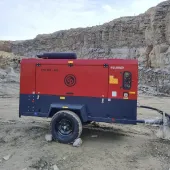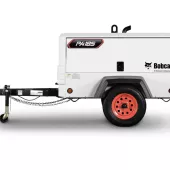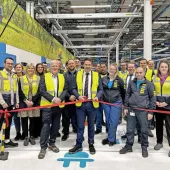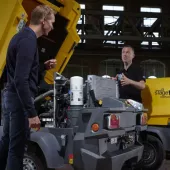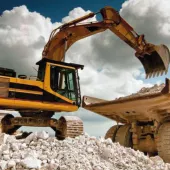A Vane Approach
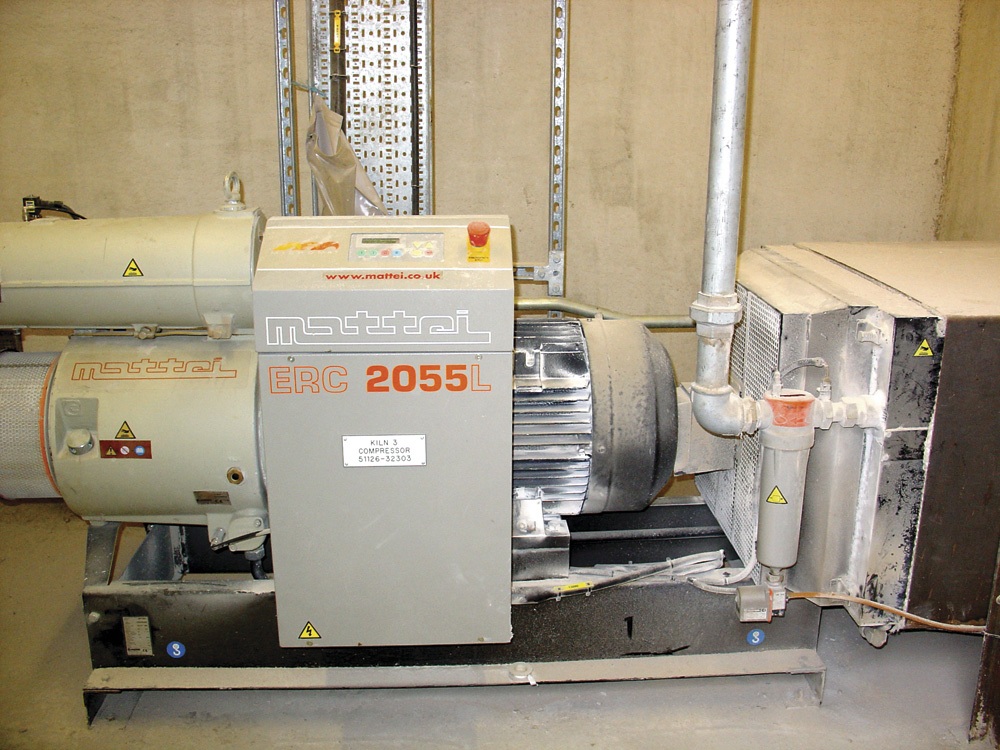
Martin Chitty, business development manager at Mattei, explains why vane compressors offer bigger advantages over screw compressors in quarrying applications
Many of today’s vane and screw compressors were developed during the 1960s and 1970s: with the former type generally regarded as the older, perhaps more outdated technology. However, according to Mattei, vane compressors offer significant advantages over screw compressors, especially in arduous quarry applications, and with major advancements being made in recent years, the belief that vane technology is ‘outdated’ is unfounded.
In working quarries, compressed air is an essential utility used for literally hundreds of different tasks from extraction through to production and packaging of the finished product. Any compressor working in or around a quarry environment needs to be reliable and very hardwearing; as it is often run continually for thousands of hours and, usually being located outside, is exposed to extreme weather conditions. In addition, a compressor can be showered with highly abrasive dust on a daily basis, which reaches every part and every component.
There are two main types of industrial rotary compressors available – vane and screw. Despite the fact they were developed at similar times and are designed to produce the same end-result, the two technologies differ quite considerably. Screw compressors currently have a large market share, but this does not mean they are superior to vane compressors.
The widespread use of screw compressors has more to do with the machinery being easier to replicate than any technological advantage, and Mattei believe vane compressors have certain benefits that make them more suitable for arduous quarry environments.
A rotary vane compressor comprises a rotor with longitudinal slots which house individual sliding vanes. The rotor is offset within a rotating stator (a cylinder). While the rotor turns on its axis, the vanes are pushed against the stator wall by centrifugal force and the air is compressed.
A screw compressor has two parallel rotors which engage into each other. These two rotors intersect longitudinally with a critical minimal clearance and, in turn, are fitted to a stator. During rotation, the profiles mesh into each other, compressing the air.
When choosing compressors for use in a quarry, among the most important considerations are wear and maintenance. A vane compressor should be looked after in accordance with the manufacturer’s instructions. Its operating life is virtually unlimited and maintenance is minimal. An air end can easily run for 100,000h without wear – some Mattei compressors have lasted over 200,000h in arduous operating conditions such as quarries.
One of Mattei’s customers in the aggregates sector allowed the company to use its site for a product demonstration. Around 25 compressor models – ranging from 2.2kW up to 75kW – operated on the quarry site and potential customers were surprised that the Mattei compressors, some of which were over 20 years old, were working so well in this type of environment.
Why are vane compressors so hardwearing?
First, there will only ever be negligible wear on the vanes because the use of a quality lubricating oil prevents any direct metal-to-metal contact between the vanes and internal stator wall.
Secondly, and perhaps most significantly, a vane compressor’s rotor shaft is supported by simple white metal bearings, which ensure a long and inexpensive operating life.
In comparison, screw compressors cannot offer the same levels of longevity. The rotors on this type of compressor have to operate with high thrust and radial loads while maintaining minimum clearances, thereby it is necessary for manufacturers to use roller bearings.
In a quarry environment, it is unlikely that these bearings will be able to withstand any ingress of dust. The recommendation is that roller bearings should be replaced after as little as 20,000 running hours, resulting in a significant cost implication for the operator.
In addition to wear and tear, quarry managers need to consider energy efficiency. As with all industries, it is now important for the aggregates industry to reduce its carbon emissions and energy usage. For a compressor to operate efficiently, it is essential for internal air leakage paths to be kept to a minimum because air lost during compression equals lost energy. If internal leakages are kept low, the volumetric efficiency is increased and the power required for a measured unit of delivered air is reduced.
In vane compressors, internal air leakage is minimal, making them volumetrically efficient. The vanes move freely in their slots, but they are always in contact with the internal surface of the stator (although not directly, due to lubrication), so the air seal is near perfect. The clearances between the rotor, stator and end covers are also efficiently sealed by oil, which is injected into the stator to lubricate the moving parts and to cool the air during compression.
In contrast, screw compressors have an inherent ‘blow hole’ that is created at the point where the external profiles of the rotors meet. The air under high pressure returns to the area of lower pressure through this pathway. Manufacturers of screw compressors have tried to reduce the blow hole, but it is impossible to eliminate it completely.
To compensate for these air leakage paths, these compressors need to run at high speeds. Vane machines operate at low speeds from a direct drive coupling, which, in turn, leads to lower power consumption.
Some of Mattei’s fixed-speed compressors operate at 1,000 rev/min, whereas a typical screw compressor needs to work at 3,000 rev/min or more to achieve the same result. Vane compressors are, therefore, more hardwearing and efficient than their screw counterparts.
Technological enhancements
In recent years there have been some major improvement in vane technology, especially in the areas of energy efficiency and oil carry-over.
In the past, off-load energy consumption was considered too high with vane machines. Today, due to improvements in internal lubrication, Mattei have been able to reduce off-load operating pressure, significantly improving off-load energy efficiency. In addition, as a result of the company’s continuous development of the rotor stator unit, the on-load power consumption of its compressors has improved and is among the lowest that can be found in any modern screw or vane machine.
One long-standing argument against vane technology is higher oil carry-over, but this has been successfully addressed. For example, in Mattei compressors the oil quantity carried over is less than three parts per million, as standard. Furthermore, oil content can be further reduced to less than one part per million with additional filtration, allowing the company’s machines to be used where ‘oil-free’ compressed-air supply is required.
Bearing in mind the tough conditions compressors are exposed to at quarry sites, it is important to choose a hardwearing technology suitable for this type of working environment. Having compared the two different compressors in detail, Mattei conclude that vane technology outperforms their screw counterparts.
For further information visit: www.mattei.co.uk


